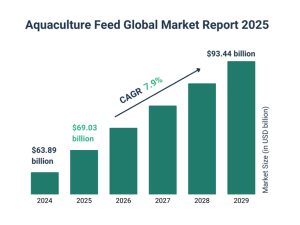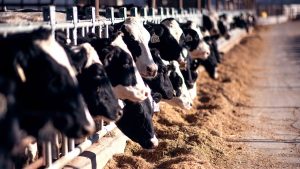As one of the most widely used protein sources in animal feed, soybean meal continues to play a pivotal role in the global feed industry, and its market dynamics are significantly influenced by global supply and demand, geopolitical factors, and sustainability efforts.
Soybean Meal Market Overview
Soybean meal, a by-product of soybean oil extraction, is a critical ingredient in the formulation of livestock and poultry feed. It is valued for its high protein content and balanced amino acid profile, making it an essential component in the diets of pigs, poultry, ruminants, and aquaculture species worldwide. The growing demand for animal protein, especially in developing regions, has driven the global soybean meal market to new heights, with production expected to increase in response to rising global consumption.
Key Trends in the Global Soybean Meal Market:
- Growing Demand in Emerging Markets: As populations rise and incomes increase, particularly in regions such as Asia, Latin America, and Africa, the demand for animal-based protein is soaring. This surge is leading to a higher demand for high-quality feed ingredients like soybean meal, which are vital for animal growth and productivity.
- Supply Chain and Price Volatility: Global soybean meal supply chains have faced increased volatility due to unpredictable weather conditions, such as droughts in key production regions (e.g., South America and the United States). This has led to fluctuations in prices, affecting feed cost structures globally.
- Sustainability and Alternative Protein Sources: In response to environmental concerns and the need for more sustainable feed ingredients, there is growing interest in alternative protein sources to complement or replace soybean meal in animal diets. Companies like Farmoo are exploring new solutions, including the use of plant-based proteins, insect meal, and algae, to reduce dependency on traditional protein sources and minimize environmental impact.
- Technological Advancements in Soybean Meal Processing: New technologies in soybean meal processing are improving its quality and nutritional value. Innovations in extraction techniques and enzyme applications are enhancing the digestibility of soybean meal, making it even more efficient as a protein source in animal feed.
- Geopolitical Impacts on Trade Flows: Geopolitical events, such as trade disputes and changes in government policies, continue to affect global trade flows of soybean meal. The ongoing trade dynamics between key players like the United States, Brazil, and China significantly influence the availability and pricing of soybean meal in different regions.
Farmoo’s Role in the Soybean Meal Market
As a key player in the global feed additives industry, Farmoo Co., Ltd. is committed to providing high-quality feed solutions that optimize the use of soybean meal in animal diets. By offering feed additives that improve feed conversion ratios and animal health, Farmoo helps farmers maximize the nutritional value of soybean meal, reduce waste, and lower feed costs.
Farmoo’s product line includes specialized additives for livestock, poultry, ruminants, and aquaculture, designed to enhance the effectiveness of soybean meal-based feeds. These solutions not only improve growth rates and feed efficiency but also promote sustainable farming practices by reducing the environmental impact of animal production.
Opportunities and Future Outlook
Looking ahead, the soybean meal market is expected to remain strong, driven by the growing demand for protein-rich animal feed. However, industry players will need to navigate challenges such as price volatility, supply chain disruptions, and increasing sustainability demands. Companies like Farmoo are well-positioned to offer innovative solutions that help farmers optimize feed efficiency, reduce costs, and support sustainable practices.






